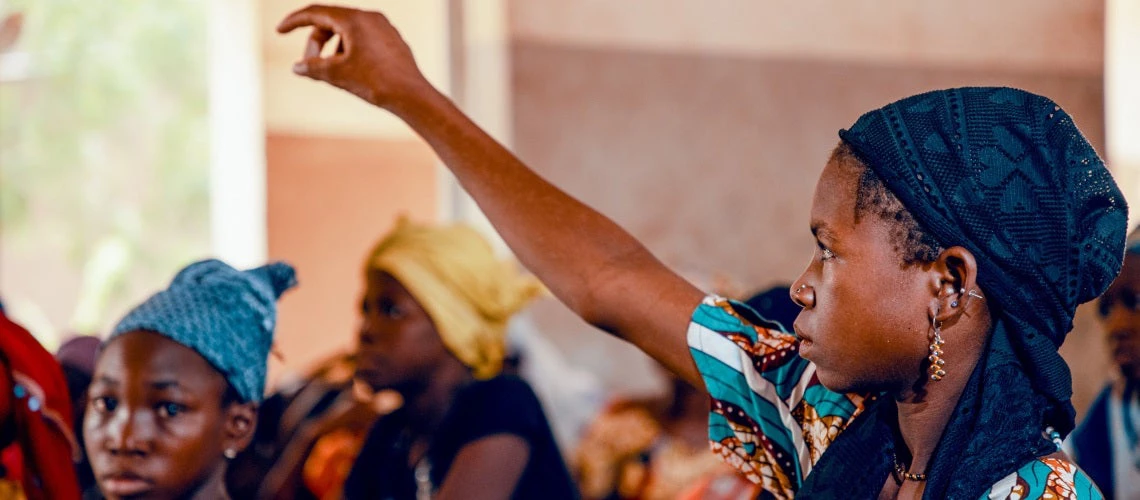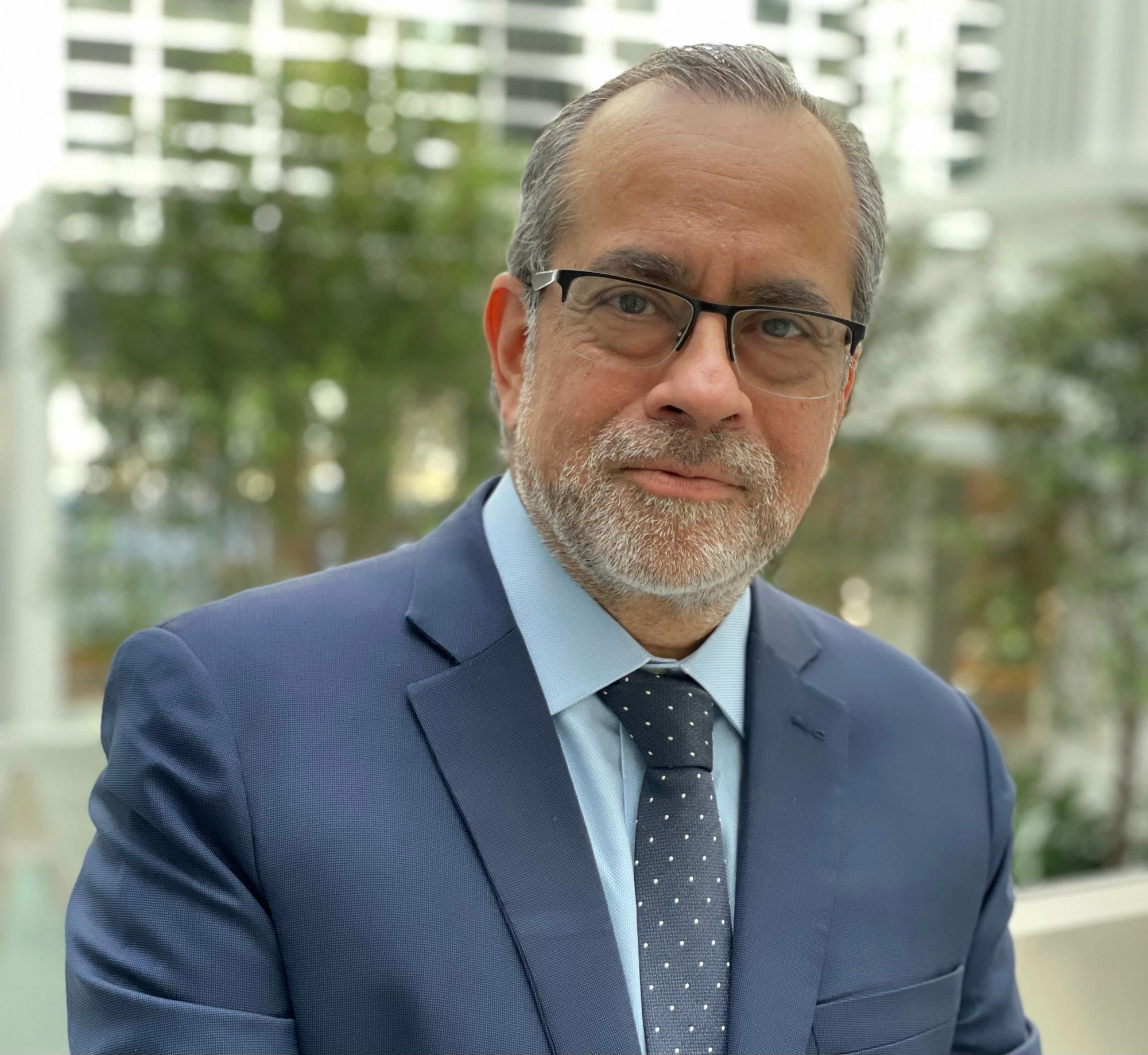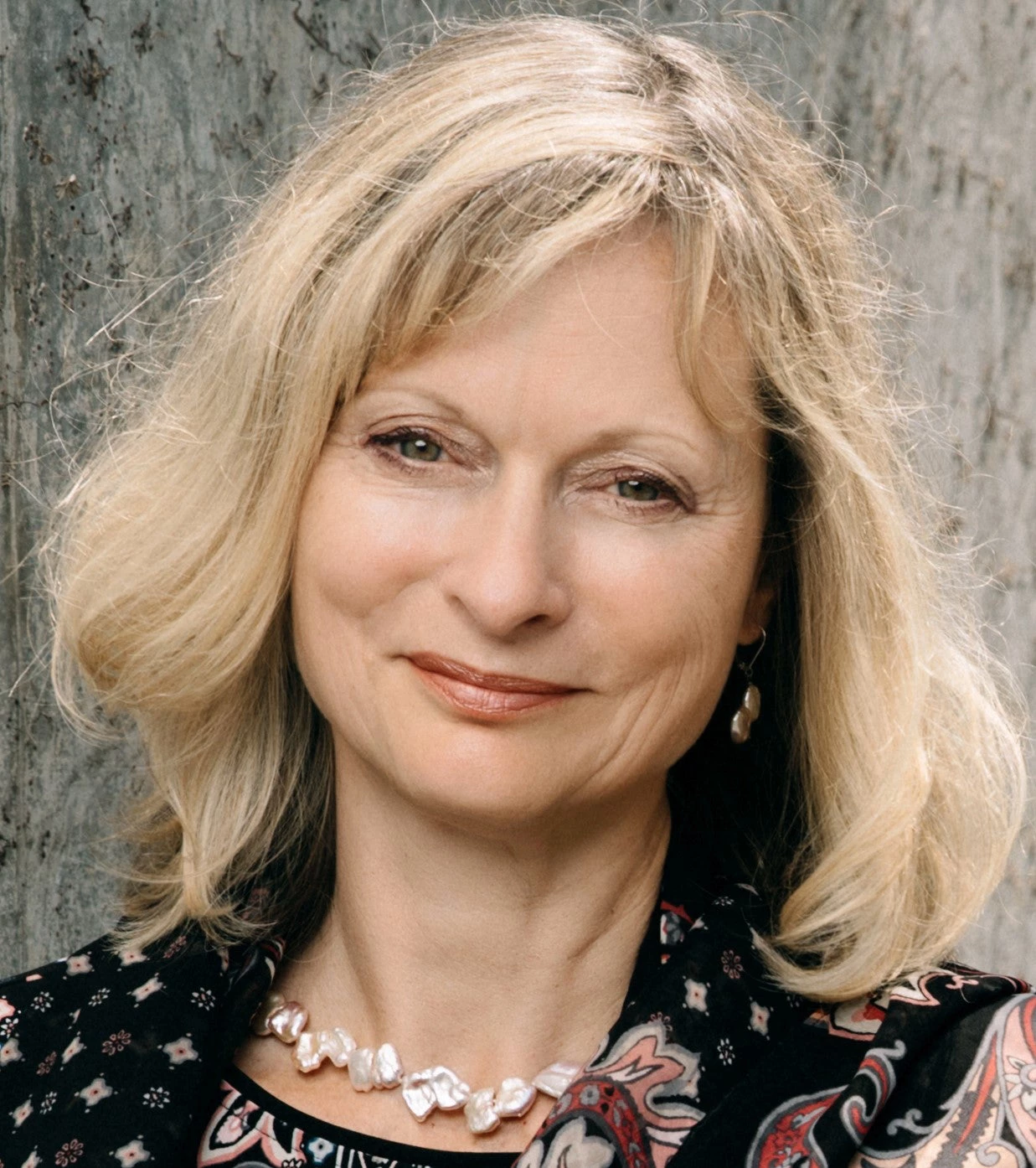 In Sub-Saharan Africa, a higher proportion of adolescent girls are in school than ever before, but many girls are still at risk of dropping out due to societal and cultural barriers. Copyright: Ollivier Girard/World Bank
In Sub-Saharan Africa, a higher proportion of adolescent girls are in school than ever before, but many girls are still at risk of dropping out due to societal and cultural barriers. Copyright: Ollivier Girard/World Bank
Over the past few decades, there has been steady progress in closing gender gaps in human endowments, opportunities, and voice and agency. However, overall progress has been hindered by the stickiness of gender norms, especially in low-income countries. Moreover, in some parts of the world, particularly in South Asia and Sub-Saharan Africa, gender gaps in access to secondary education and in labor force participation are actually increasing. Accelerating improvement isn’t enough; we need to change the direction of travel.
In education, a higher proportion of adolescent girls are in school than ever before in Sub-Saharan Africa, but the percentage of those who complete secondary education is still dismally low at 42%. Additionally, for those who are in school, educational gains are not realized as labor market outcomes for women, in part due girls dropping out of school due to societal and cultural barriers.
Through our global education and regional strategies, the World Bank is committed to ensuring that education is accessible to everyone, especially girls, across all levels of education, by eliminating barriers created by gender norms that persist throughout the education cycle. In West and Central Africa, we aim to increase girls secondary school gross enrollment from the 42% to 57% percent by 2030 and help shift socio-cultural norms that negatively impact girls. We also have similar goals across Eastern and Southern Africa in the short and long term. Below, we outline four ways the World Bank is working with countries to remove barriers affecting girls’ education.
1. Shifting norms hindering adolescent girls’ education
Students’ low or inaccurate expectations of the returns from education can affect their enrollment and subsequent academic performance. Parents do not believe that educating girls helps the family from an economic or social perspective. The World Bank is supporting a large project in Nigeria that includes an information campaign to help bust these common myths about education, and aims to shift social norms and community perception of the role of girls and value of girls’ secondary education. Similarly, in Sao Tome and Principe, a World Bank project is helping raise awareness among the school community about the value of education for all and the negative effects of dropping out.
2. Making schools safe for girls
Data from Violence Against Children Surveys has found that between 15% and 51% of girls under the age of 18 experienced sexual violence in Malawi, Nigeria, Zambia and Uganda. Promoting safety and inclusive schools, and creating an inclusive environment for girls, are essential in increasing enrollment and academic performance.
Several World Bank education projects are committed to making schools safe for all. The Nigeria and Sao Tome and Principe projects, for example, are also conducting communication campaigns on the importance of the need for safe, enabling, and inclusive environments, prevention, and mitigation of gender-based violence (GBV) and sexual exploitation and abuse. A project in Tanzania, helps create safe learning environments for 1 million students through a comprehensive safe school program, which provides school guidance and counselling services, training to school staff in GBV issues, early identification and intervention for girls at risk of dropping out, as well as identifying safe passage to school through community members.
3. Shifting stereotypes that affect learning
Beyond getting girls to school, educational programs that change the perception about women’s role in society have the potential to improve human capital outcomes and change negative gender norms. Negative perceptions about girls’ mathematical abilities persist, and are perpetuated by negative gender stereotypes in teaching and learning materials. Educational projects in Nigeria, Sao Tome and Principe, Tanzania, and Angola are supporting teacher training programs for reducing gender bias in classrooms and promoting girls’ clubs in schools. Furthermore, projects in Chad, Cabo Verde, and Central Africa Republic are addressing gender stereotypes by introducing reading materials that are gender-sensitive, include positive role models for girls, and integrate curriculum that promotes inclusion and gender equality.
4. Supporting young women to transition to the labor market
Across the world, women are less likely to enroll in some science, technology, engineering and mathematics (STEM) fields, which is driven by stereotypes and gender biases. Those biases must be eliminated. Through a project in Tanzania, the World Bank is supporting girls’ participation in STEM subjects by developing outreach programs for students, providing mentorship programs and scholarships for women, and implementing a national gender equity strategy to attract women to priority degree programs. These programs work. In Nigeria, an impact evaluation of a World Bank project that provided information and communication technology (ICT) training to female university graduates found impressive results: participants were 26 percent more likely to work in the ICT sector after they received an specialized training.
Looking to the future
Preventing gender norms from negatively affecting adolescent girls learning and future opportunities is an enormous but urgent task. And must be done at every step of their engagement with an education system – ensuring appropriate information is shared with their families, supporting them once they are in school, removing biases in educational materials, and providing support needed to transition from school to the labor market.
Our projects across Africa are just a few examples of the commitments to ensure that all adolescent girls in Africa are empowered and have the right education and skills to decide their own futures for themselves.
The authors would like to recognize Raja Bentaouet Kattan, Laura B. Rawlings, Myra Murad Khan and Tijan Bah for their contributions to this blog.
This blog is part of a series of blogs for International Women’s Day 2023 by Education Global Practice; and of the exchanges for the World Bank’s upcoming Gender Strategy Update FY24-30.



Join the Conversation